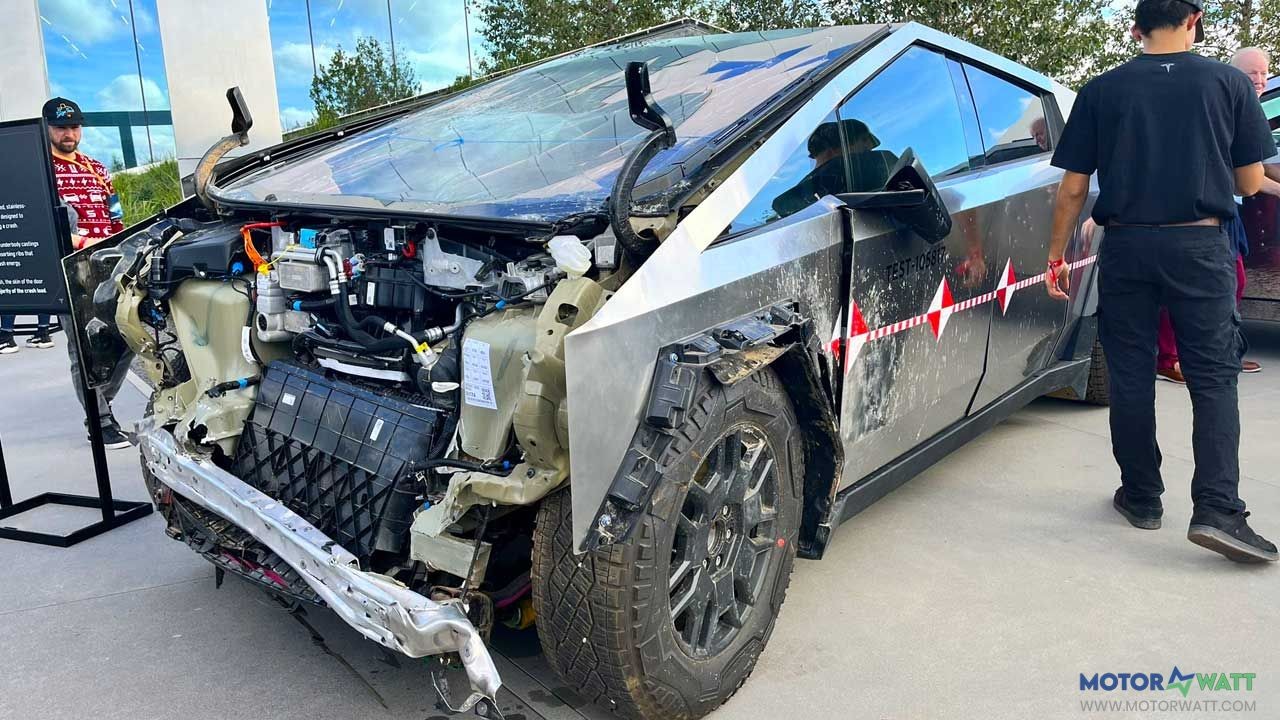The Safety Features of Tesla's Cybertruck: Fact or Fiction?
Deciphering the Safety Innovations of Tesla's Cybertruck
Tesla's CEO, Elon Musk, has made bold claims about the safety of the Cybertruck, positioning it as "much safer per mile" than its competitors. However, recent controversies surrounding occupant and pedestrian safety have cast doubt on these assertions. In this comprehensive examination, we will delve into the details, scrutinizing the Cybertruck's safety features and addressing concerns that have emerged.
The Controversy Unveiled: Slow-Motion Crash Tests: Analyzing the Impact Forces: Tesla's decision to share slow-motion crash test videos during the Cybertruck's delivery event ignited a debate regarding occupant safety. These videos raised concerns about the absence of crumple zones designed to absorb impact forces in the event of a collision.
The Alarming Lack of Deformation: The focal point of concern stemmed from the apparent lack of visible deformation of the Cybertruck during a head-on collision at 35 MPH. Unlike most modern vehicles, the Cybertruck did not crumple, and it even exhibited significant rear wheel movement upon impact, akin to vehicles from the 1970s.
The Low Center of Gravity Advantage: Elon Musk's Perspective: During the Cybertruck's delivery event, Elon Musk emphasized the truck's low center of gravity as a pivotal safety feature. He argued that this design element reduces the risk of rollovers, potentially enhancing occupant safety in collisions. Musk even quipped that in an argument with another car, the Cybertruck would prevail.
Beyond Occupancy Safety: Pedestrian Considerations: The Internet's Counter-Argument: Elon Musk's response to safety concerns wasn't confined to occupants; it also encompassed pedestrian safety. Critics argue that Tesla's suite of safety software and the Cybertruck's sloped front-end design position it as a safer alternative in its class.
Trucks and Pedestrian Safety: A Troubling Statistic: The Alarming Statistics: Studies conducted by the Insurance Institute for Highway Safety have shed light on the danger posed by trucks to pedestrians during crashes. Trucks with hood heights exceeding 40 inches are reported to be approximately 45% more likely to result in pedestrian fatalities, compounding the issue further when coupled with the potent acceleration and force typical in collisions involving heavy electric vehicles.
Hood Height and Front-End Profile: What Matters More? Deciphering the Impact of Hood Height: While the Cybertruck boasts a significantly sloped hood compared to its peers like the F-150, studies suggest that once a vehicle's hood height surpasses 40 inches, the front-end profile matters less in terms of pedestrian survivability. This insight challenges assumptions about the Cybertruck's unique design.
The European Roadblock: Sharp Protrusions and Safety Standards: Why the Cybertruck May Not Reach Europe: European safety regulations mandate that all external vehicle projections have rounded corners of at least 3.2 millimeters to prevent potential harm in pedestrian impacts. Tesla's Vice President of Vehicle Engineering, Lars Moravy, has indicated that meeting this requirement through Tesla's "air bending" production method may be "impossible."
Tesla's Safety Track Record: Transparency and Accountability: The Importance of Data: Tesla has a history of highlighting vehicle safety through quarterly reports. These reports tracked millions of accident-free miles driven by Tesla's fleet, with and without Autopilot, in comparison to the U.S. average. However, this practice ceased at the end of 2022, leaving questions about the company's commitment to transparency.
Conclusion: The safety claims surrounding Tesla's Cybertruck are complex and multifaceted. While Elon Musk and Tesla assert that the Cybertruck's design enhances both occupant and pedestrian safety, concerns persist. The controversy surrounding the Cybertruck's slow-motion crash tests and its compatibility with European safety standards adds layers of uncertainty. As the Cybertruck's production date approaches, it remains to be seen whether it can substantiate its claims with concrete data and truly redefine safety in its class.

Comments